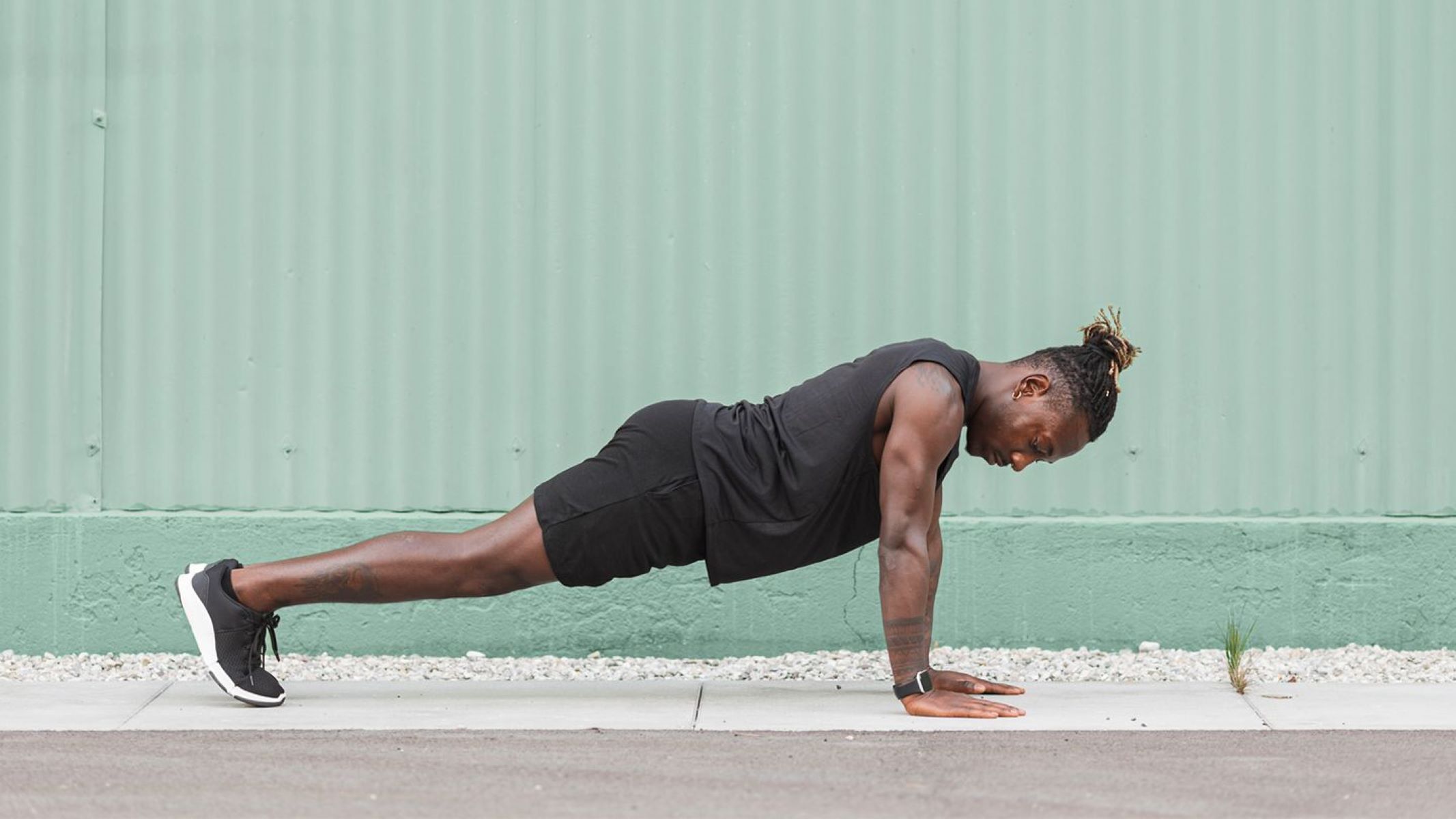Home>Misc>Featured>How Long To Build Cardiovascular Endurance


Featured
How Long To Build Cardiovascular Endurance
Modified: January 22, 2024
Discover how long it takes to develop cardiovascular endurance through our featured guide. Find effective strategies and tips to improve your endurance levels.
Introduction
Welcome to our comprehensive guide on building cardio endurance. If you are looking for ways to improve your stamina and overall fitness level, you’ve come to the right place. Cardiovascular endurance plays a crucial role in maintaining a healthy lifestyle and achieving optimal athletic performance. Whether you’re a seasoned athlete or just starting your fitness journey, enhancing your cardio endurance can bring numerous benefits to your overall well-being.
Cardio endurance, also known as cardiovascular endurance or cardiorespiratory endurance, refers to the ability of your heart, lungs, and muscles to sustain prolonged physical activity. It is a measure of how efficiently your body can supply oxygen to the muscles during exercise and remove waste products, such as carbon dioxide.
Having good cardio endurance allows you to perform physical activities for an extended period without feeling excessively fatigued or out of breath. It not only improves your performance in activities like running, cycling, swimming, or team sports, but it also has a positive impact on your daily activities, such as walking up a flight of stairs or carrying groceries.
Cardio endurance is essential for maintaining a healthy cardiovascular system. Regular cardio exercise can help reduce the risk of heart disease, lower blood pressure, improve cholesterol levels, control weight, and enhance mental well-being. Whether your goal is to lose weight, increase fitness levels, or prepare for a specific event, building cardio endurance should be an integral part of your exercise routine.
Before we delve into the details of how to build cardio endurance, let’s explore the factors that can affect your cardio endurance level and how to measure it accurately.
What is Cardio Endurance?
Cardio endurance, also known as cardiovascular endurance or cardiorespiratory endurance, is one of the key components of physical fitness. It refers to the ability of your cardiovascular system to deliver oxygen to your muscles during prolonged physical activity and sustain that activity over an extended period. In simple terms, it measures how well your heart, lungs, and muscles work together to supply oxygenated blood to your body and remove waste products.
During aerobic exercise, which includes activities like running, swimming, cycling, or dancing, the body requires a constant supply of oxygen to meet the energy demands of the muscles. To meet this demand, the heart pumps more blood per minute, and the lungs take in more oxygen, while the muscles efficiently extract oxygen from the blood to produce energy.
When you engage in regular cardio workouts, your body adapts by increasing the efficiency of your cardiovascular system. This adaptation results in a variety of benefits, including improved heart function, increased lung capacity, enhanced oxygen delivery to muscles, and improved metabolic efficiency. As a result, you can engage in physical activities for longer durations without getting tired quickly or experiencing excessive breathlessness.
Cardio endurance is typically measured by assessing your maximum oxygen uptake, known as VO2 max. VO2 max represents the maximum amount of oxygen your body can utilize during intense exercise. The higher your VO2 max, the higher your cardio endurance level.
Improving cardio endurance has numerous advantages. It not only enhances your performance in sports and athletic activities but also improves your overall health and quality of life. Regular cardio exercise can help you maintain a healthy weight, reduce the risk of chronic diseases, such as heart disease and diabetes, boost your mood, increase energy levels, and improve sleep quality.
Now that we have a clear understanding of what cardio endurance is, let’s explore the factors that can influence your cardio endurance level and how to accurately measure it.
Importance of Cardio Endurance
Cardio endurance plays a vital role in maintaining overall health and fitness. It offers numerous benefits that extend beyond just improving athletic performance. Let’s explore some of the key reasons why cardio endurance is important:
1. Improved Heart Health: Engaging in regular cardio exercise helps strengthen your heart muscle and improves its efficiency. It reduces the risk of cardiovascular diseases, including heart attacks, strokes, and high blood pressure.
2. Increased Stamina: Building cardio endurance enhances your stamina and enables you to engage in physical activities for longer durations without getting tired quickly. It improves your overall energy levels and ability to perform daily tasks more efficiently.
3. Weight Management: Cardio workouts are excellent for burning calories and maintaining a healthy weight. Regular aerobic exercise helps you shed excess body fat, as well as maintain and manage your weight effectively.
4. Reduced Risk of Chronic Diseases: Studies have consistently shown that individuals with good cardio endurance have a lower risk of developing chronic diseases such as diabetes, certain types of cancer, and metabolic disorders.
5. Enhanced Mental Well-being: Engaging in cardio exercise releases endorphins, which are known as “feel-good” hormones. This can boost your mood, reduce stress levels, and improve overall mental well-being. Regular cardiovascular activity has also been linked to reduced symptoms of depression and anxiety.
6. Improved Brain Health: Cardiovascular exercise promotes better blood flow to the brain, which can improve cognitive function, memory, and overall brain health. It can enhance focus, concentration, and productivity in both academic and professional settings.
7. Increased Longevity: People with good cardio endurance tend to live longer, healthier lives. Regular exercise, especially cardio workouts, has been shown to increase life expectancy and improve overall quality of life.
Incorporating cardio endurance-building exercises into your fitness routine is a crucial component in achieving optimal health and fitness. Whether you are an athlete looking to enhance performance or simply aiming to improve your overall well-being, dedicating time to improving your cardio endurance is well worth the effort.
Factors Affecting Cardio Endurance
Cardio endurance is influenced by a variety of factors that can either enhance or hinder your ability to sustain prolonged physical activity. Understanding these factors can help you make informed decisions and tailor your fitness routine to improve your cardio endurance. Here are some of the key factors that affect cardio endurance:
1. Genetics: Genetics plays a role in determining your baseline cardiovascular fitness. Some individuals may naturally have a higher capacity for cardio endurance due to their genetic makeup. However, even if you have genetic predispositions, you can still improve your cardio endurance through consistent training and lifestyle modifications.
2. Age: Age can affect cardio endurance, as the cardiovascular system tends to become less efficient as we get older. However, regular cardio exercise can help counteract the age-related decline in cardio endurance and maintain a healthy cardiovascular system.
3. Fitness Level: Your current fitness level plays a significant role in determining your cardio endurance. If you are relatively inactive, your cardio endurance may be lower compared to someone who engages in regular aerobic exercise. As you build your fitness level, your cardio endurance will improve.
4. Body Composition: Body composition, specifically body fat percentage and muscle mass, can impact cardio endurance. Excess body fat puts additional strain on the cardiovascular system, making it harder to maintain prolonged physical activity. Conversely, a higher muscle mass can enhance cardio endurance by providing more efficient oxygen utilization.
5. Training Program: The type and intensity of your training program can influence cardio endurance. Engaging in regular aerobic exercises, such as running, cycling, swimming, or high-intensity interval training (HIIT), can improve cardio endurance more effectively than low-intensity activities. Varying the duration, frequency, and intensity of your workouts can also contribute to improved cardio endurance.
6. Nutrition and Hydration: Proper nutrition and hydration are crucial for optimal cardio endurance. A diet rich in complex carbohydrates, lean proteins, and healthy fats provides the necessary fuel for your workouts. Staying hydrated helps maintain optimal blood volume and prevent fatigue during exercise.
7. Lifestyle Factors: Lifestyle habits, such as smoking, excessive alcohol consumption, poor sleep quality, and high stress levels, can negatively impact cardio endurance. Making positive lifestyle changes, such as quitting smoking, moderating alcohol intake, improving sleep habits, and managing stress, can significantly improve your cardio endurance.
It’s important to keep in mind that while these factors can influence your cardio endurance, they are not set in stone. With consistent effort, dedication, and the right training approach, you can overcome these barriers and improve your cardio endurance level.
How to Measure Cardio Endurance
Measuring your cardio endurance can provide valuable insights into your fitness level and progress. There are several methods to assess your cardio endurance accurately. Here are some common ways to measure cardio endurance:
1. VO2 Max Test: The gold standard for measuring cardio endurance is a VO2 max test. This test involves wearing a mask that collects and analyzes the amount of oxygen you breathe in and the carbon dioxide you exhale. The results determine your maximum oxygen uptake, which reflects your cardio endurance level. VO2 max tests are typically conducted in specialized exercise physiology labs or fitness centers.
2. Submaximal Exercise Tests: Submaximal exercise tests are more accessible and practical options for measuring cardio endurance. These tests involve performing exercises at a submaximal level, typically on a treadmill, stationary bike, or elliptical machine, while your heart rate and exertion level are monitored. Based on your heart rate response and exertion level, an estimation of your cardio endurance can be made.
3. Field Tests: Field tests are simple, practical assessments that can be performed without specialized equipment. One common field test is the Cooper 12-Minute Run, where you run as far as you can in 12 minutes. Another example is the 1.5-Mile Run, which measures the time it takes to run a specific distance. These tests provide a good estimate of cardio endurance and can be easily performed in various settings.
4. Heart Rate Monitoring: Monitoring your heart rate during exercise can give you an indication of your cardio endurance. A heart rate monitor can be worn during your workouts to track your heart rate zones and how long you can sustain activity at different intensity levels. Over time, you can observe improvements in your heart rate response to exercise as your cardio endurance increases.
5. Ratings of Perceived Exertion (RPE): RPE is a subjective measure of how hard you feel your body is working during exercise. It is usually assessed using a 0-10 or 6-20 scale. Monitoring your perceived exertion can provide insight into your cardio endurance level. As your cardio endurance improves, you may find that the same level of exercise feels easier or requires less effort.
When measuring your cardio endurance, it’s important to remember that these tests and assessments provide a snapshot of your current fitness level. Regularly reassessing your cardio endurance using one or more of these methods can help track progress and guide adjustments to your training program.
How Long Does it Take to Build Cardio Endurance?
The time it takes to build cardio endurance varies from person to person and can depend on several factors, including your current fitness level, genetics, training consistency, and intensity. While there is no magic time frame, consistent effort and the right training approach can lead to noticeable improvements in cardio endurance. Here are some general guidelines to consider:
1. Starting Point: Your starting point plays a significant role in determining how long it will take to build cardio endurance. If you are relatively sedentary or have been inactive for an extended period, it may take longer to see improvements compared to someone who has a higher baseline fitness level.
2. Consistency: Consistency is key when it comes to building cardio endurance. Regularly engaging in cardio exercises, such as running, swimming, or cycling, is essential to stimulate adaptations in your cardiovascular system. Aim for at least three to five sessions per week to see progression in your endurance levels.
3. Gradual Progression: It’s important to gradually increase the intensity, duration, or frequency of your workouts to avoid overtraining or injury. Start with manageable levels of exercise and gradually progress over time. This allows your body to adapt and build endurance without overstressing your cardiovascular system.
4. Progressive Overload: To continue building cardio endurance, you will need to continually challenge your body with increasing levels of intensity or duration. Incorporate interval training, where you alternate between high-intensity bursts and recovery periods, to push your cardiovascular system and improve your overall endurance capacity.
5. Listen to Your Body: Pay attention to how your body responds to exercise and adjust your training accordingly. If you experience excessive fatigue, persistent pain, or other signs of overtraining, it’s important to dial back the intensity or take rest days to allow for proper recovery.
As a general rule, most individuals can expect to see noticeable improvements in cardio endurance within a few weeks to a few months of consistent training. However, it’s important to remember that building endurance is an ongoing process. It should be viewed as a long-term commitment rather than a quick fix.
Keep in mind that progression in cardio endurance is individualized, and everyone’s journey will be different. Celebrate small victories along the way and focus on the overall improvement in your fitness level rather than obsessing over specific timelines. Stay committed, stay consistent, and you will see your cardio endurance improve over time.
How to Build Cardio Endurance
Building cardio endurance requires a systematic approach that combines the right types of exercises, proper training techniques, and consistency. Here are some effective strategies to help you build and improve your cardio endurance:
1. Aerobic Exercises: Engage in aerobic exercises that elevate your heart rate and challenge your cardiovascular system. Activities such as running, cycling, swimming, dancing, and using cardio machines like the elliptical or rowing machine are excellent choices. Aim for at least 150 minutes of moderate-intensity aerobic exercise or 75 minutes of vigorous-intensity exercise each week.
2. Interval Training: Incorporate high-intensity interval training (HIIT) into your routine. Alternate between short bursts of intense exercise and active recovery periods. For example, run at a near-maximum effort for 30 seconds, followed by one minute of jogging or walking. Repeat this pattern for several cycles. HIIT workouts are efficient and help improve both cardiovascular endurance and fat burning.
3. Long Slow Distance (LSD) Training: This method involves lower intensity, longer duration exercises. For example, going for a long run or cycling at a steady pace for an extended period. LSD training helps improve your body’s ability to use oxygen efficiently and build endurance for prolonged activities.
4. Gradual Progression: Gradually increase the intensity, duration, or frequency of your workouts over time. The principle of progressive overload applies here, where you systematically challenge your body to adapt to increasing demands. For example, gradually increase your running distance each week or add extra minutes to your cardio sessions.
5. Cross-Training: Incorporate a variety of cardio exercises into your routine to engage different muscle groups and prevent overuse injuries. Cross-training can also make your workouts more enjoyable and prevent boredom. You can mix and match activities like swimming, cycling, hiking, or using the stair climber machine.
6. Circuit Training: Combine cardiovascular exercises with strength training in a circuit-style workout. Perform a set of cardio exercise, such as jumping jacks or high knees, followed by a set of bodyweight exercises like squats or push-ups. This approach helps build both muscular endurance and cardiovascular endurance simultaneously.
7. Consistency is Key: Building cardio endurance requires consistency and commitment. Make it a priority to engage in regular cardio workouts and establish a routine. Aim for at least three to five cardio sessions per week, depending on your fitness level and schedule.
Remember to listen to your body and adjust your workouts accordingly. Allow for proper rest and recovery between sessions to prevent overtraining and reduce the risk of injuries. It’s important to find a balance between pushing yourself and allowing enough time for recovery.
By incorporating these strategies into your fitness routine and staying consistent, you can gradually enhance your cardio endurance and enjoy the numerous benefits that come with it.
Proper Diet for Building Cardio Endurance
When it comes to building cardio endurance, proper nutrition plays a crucial role in providing your body with the necessary fuel and nutrients for optimal performance. Here are some key dietary considerations to enhance your cardio endurance:
1. Balanced Macronutrient Intake: Maintain a balanced diet that includes an appropriate intake of carbohydrates, protein, and healthy fats. Carbohydrates are your body’s primary source of energy, so include complex carbohydrates like whole grains, fruits, and vegetables in your meals. Protein is essential for muscle repair and recovery, so ensure an adequate intake through lean sources such as poultry, fish, beans, and legumes. Healthy fats from sources like avocados, nuts, seeds, and olive oil provide sustained energy and help support cardiovascular health.
2. Adequate Hydration: Stay properly hydrated to optimize cardiovascular function and prevent dehydration. Aim to drink enough water throughout the day, especially before, during, and after your workouts. The amount of water you need may vary based on factors like body size, activity level, and sweat rate. Listen to your body and drink when you feel thirsty, as thirst is a sign of dehydration.
3. Pre-Workout Fuel: Eat a small, balanced meal or snack containing carbohydrates and a moderate amount of protein around 1 to 2 hours before your cardio workouts. This provides your body with readily available energy and prevents low blood sugar levels during exercise. Include foods like whole grain toast with nut butter, Greek yogurt with fruits, or a vegetable omelet.
4. During-Workout Fuel: For longer duration workouts, consider refueling with easily digestible carbohydrates during your exercise sessions. This can be in the form of sports drinks, energy gels, or small snacks like banana or a handful of raisins. These fuel sources provide quick energy and help maintain your performance during intense cardio workouts.
5. Post-Workout Recovery: After your cardio workout, prioritize post-workout nutrition to replenish glycogen stores and aid in muscle recovery. Consume a combination of carbohydrates and protein within 30 minutes to an hour after exercise. This can be in the form of a protein shake, yogurt with fruits, or a balanced meal consisting of lean protein, whole grains, and vegetables.
6. Micronutrient-Rich Foods: Include a variety of fruits and vegetables in your diet to ensure an adequate intake of essential vitamins, minerals, and antioxidants. These nutrients support overall health, enhance recovery, and protect against exercise-induced oxidative stress. Focus on colorful options like berries, leafy greens, citrus fruits, and bell peppers.
7. Listen to Your Body: Pay attention to how certain foods make you feel during your workouts. Experiment with different foods and meal timings to find what works best for you. Everyone’s nutritional needs and tolerance to certain foods may vary, so it’s important to listen to your body and make adjustments accordingly.
Remember, nutrition is a personal journey, and it’s important to find a way of eating that works for you and supports your fitness goals. Consider working with a registered dietitian or nutritionist who can provide personalized recommendations based on your individual needs and goals.
Common Mistakes to Avoid
When it comes to building cardio endurance, it’s important to be aware of common mistakes that can hinder your progress and potentially lead to injury. Avoiding these mistakes will help you optimize your training and make the most of your efforts. Here are some common mistakes to be cautious of:
1. Overtraining: Pushing yourself too hard and not allowing enough time for rest and recovery can lead to overtraining. Overtraining can negatively impact your cardio endurance and increase the risk of injuries. Listen to your body and incorporate rest days into your training schedule to allow for proper recovery.
2. Neglecting Strength Training: Many people focus solely on cardio exercises and neglect strength training. Incorporating strength training exercises into your routine helps improve muscular endurance, which in turn enhances your overall cardio performance. Aim for a well-rounded training program that includes both cardiovascular and strength exercises.
3. Incorrect Form and Technique: Performing cardio exercises with incorrect form and technique can lead to injury and limit your progress. It’s essential to learn and practice proper form for each exercise to ensure maximum efficiency and prevent strain on your joints and muscles. Consider working with a qualified fitness professional to guide you in maintaining proper form.
4. Poor Nutrition and Hydration: Proper nutrition and hydration are vital for building cardio endurance. Avoid the mistake of fueling your body with unhealthy processed foods or relying on sugary sports drinks. Instead, focus on a balanced diet consisting of whole foods that provide adequate nutrients and hydration to support your workouts.
5. Lack of Variation: Doing the same cardio exercises repeatedly can cause plateaus and boredom. It’s important to incorporate variety into your workouts to keep challenging your cardiovascular system and prevent burnout. Try different exercise modalities, intervals, or explore new outdoor activities to keep your workouts fresh and engaging.
6. Inconsistency: Consistency is key when it comes to building cardio endurance. Skipping workouts or being inconsistent in your training regimen can impede progress. Make exercise a regular part of your routine and stick to your schedule as much as possible.
7. Ignoring Warning Signs: Pay attention to your body and any warning signs of pain, discomfort, or injury during exercise. Pushing through pain or ignoring warning signs can worsen injuries and set you back in your training. If you experience persistent pain, it’s important to seek appropriate medical attention and modify your workouts accordingly.
By avoiding these common mistakes, you can minimize the risk of setbacks and maximize your potential in building cardio endurance. Remember to train smart, listen to your body, and make adjustments as necessary to ensure steady progress towards your fitness goals.
Conclusion
Building cardio endurance is a journey that requires dedication, consistency, and the right training approach. By improving your cardio endurance, you can enhance your overall fitness level, performance in physical activities, and promote a healthy cardiovascular system. Remember the following key points:
– Cardio endurance refers to the ability of your heart, lungs, and muscles to sustain prolonged physical activity.
– Factors such as genetics, age, fitness level, and training consistency can affect cardio endurance.
– There are various methods to measure cardio endurance, including VO2 max tests, submaximal exercise tests, heart rate monitoring, and perceived exertion scales.
– Building cardio endurance takes time and patience, with noticeable improvements usually seen within a few weeks to months of consistent training.
– To build cardio endurance, engage in aerobic exercises, incorporate interval training and long slow distance sessions, gradually progress your workouts, and prioritize consistency.
– Proper nutrition, hydration, and avoiding common mistakes such as overtraining, neglecting strength training, poor form, and inconsistent training are crucial for optimal results.
Remember, each person’s journey to building cardio endurance will be unique. Listen to your body, adjust your training as necessary, and celebrate small victories along the way. With commitment, perseverance, and a well-rounded approach, you can improve your cardio endurance and enjoy the countless benefits it brings to your overall health and well-being.









